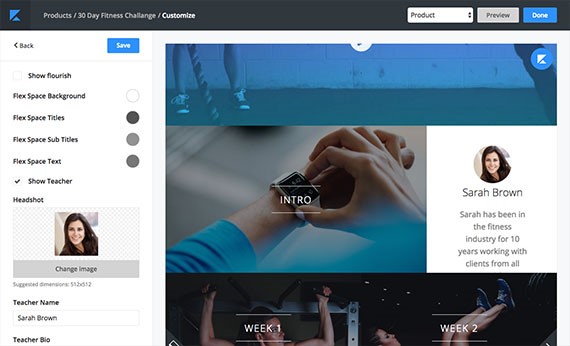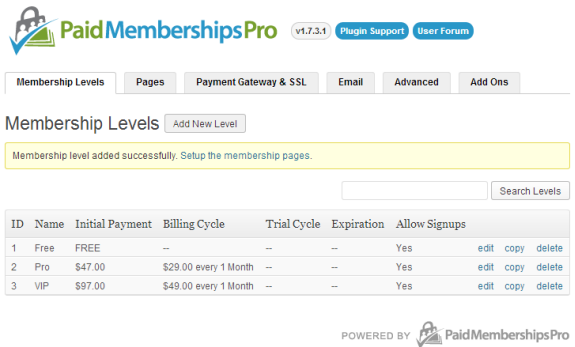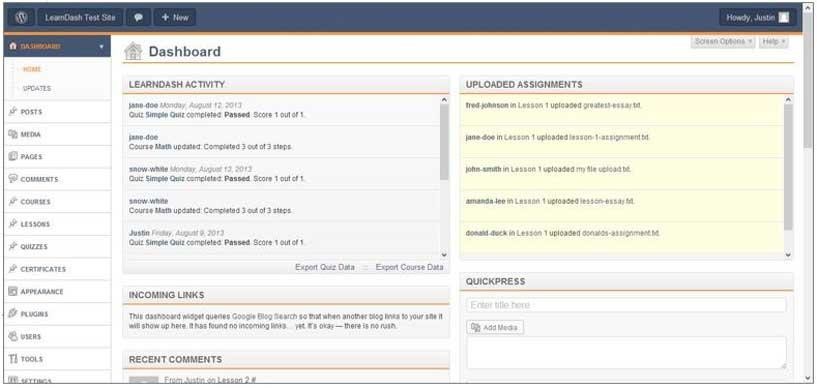There are four different ways to sell content online. You’d think that choosing between four methods would be easy, but alas, there is so much choice in those four methods, that it’s difficult to choose the right one.
The thing about selling content online, is that not only do you need the best way to upload your content, but you also need to consider a host of other stuff, like search engine optimization, marketing, presentation, delivery methods, payment and so on.
In addition, there are methods that cater for the small business, and others for larger companies who already have hundreds of courses.
Methods of selling content
Before you take the plunge and decide on a platform for your online courses, be diligent about doing your homework. The reason for this is that once you’ve loaded your content onto one platform, it’s going to be a mission to move it someplace else. FastSpring’s easy-to-use, full-service ecommerce platform includes everything you need to successfully sell digital downloads globally.
What you need to consider:
- Hosting for reliability and speed – you want to make sure your learners don’t get frustrated with the backend of your platform.
- Payment options – it is best to provide as many payment options as possible, or you may lose business.
- How easy it is to upload stuff like digital downloads and videos – you don’t want to battle when uploading digital downloads, videos, etc.
- Help with marketing the courses – does the platform make marketing your courses easier? For instance, does the platform provide a landing page builder?
- Course content delivery – how does the content need to be delivered? I.e., you may want to drip feed it by email. If so, how will it work.
- Integration with other third party services – understand exactly what else you’ll need to make everything work, and find out if those functions are easily integrated.
- Whether the platform is mobile responsive or not – drop it like a hotcake if it is not.
- Whether the platform is search engine friendly – Is the platform built to provide search engines with what they need, so that you get more traffic?
As you go through the options below, you’ll need to find out the answers to the above questions. And only then should you make your decision.
Oh, and one last thing: avoid making your decision based on price, as this could bite you in the butt at a later stage.
Types of platforms for small businesses
Branded Learning Management Systems website business
Think of this platform as purchasing a full-on online business. All you need to do is change the templates and add the content. It’s probably the easiest way to set up an online training business.
If we were to use Kajabi as an example of a branded LMS website business – and be aware that all of these types of platforms vary in what they offer – you get your own customizable website, landing page templates you can use to direct traffic to in order to get higher conversions, and you can email right from the system, so drip feeding is a piece of cake and you don’t need to pay extra for an email marketing software facility. All the tools you need are provided.
Pricing for a system like Kajabi is $103 per month as a starter, but you save costs by not having to fork out for a landing page builder and email marketing software.
This option is the superior choice because it has everything in one tool, is easiest to setup and use, and consists of everything you’ll need for marketing purposes.
WordPress websites membership plugins
If you’re already on WordPress, you may want to install a membership plugin. There are free options which is great because if your budget does not allow for any other paid option, it’s nice to know that there are ways to create an online course business using free tools.
But as with all tools, check that the plugin of your choice can do what you need it to do, and that it works well and integrates with any other services you may need to add, like an email software platform and payment gateways.
It’s not suggested you choose this option if you are a WordPress newbie, because you may face some serious struggles.
Membership websites are perfect for getting a community together: sharing media, tutorials, or ideas for the selected ones who join your secret club. However, managing such a platform may seem a very messy thing. Handling payments, subscriptions, permissions, and many more services can sound very intimidating. This is where the right membership website builder can make your life easier. With superior ease of use and great design, they can help create a great experience for both you and your visitors.
WordPress websites Learning Management System plugins
While membership plugins are made specifically for control access of content, LMS plugins are developed specifically for online courses and are best in terms of structure and creating a course that flows in a specific order, providing a complete learning path.
They also tend to provide course-rich features, like quizzes, assignments, progress tracking and certificates.
An example of an LMS plugin is LearnDash. Prices vary, but you’re looking at about $160 for a single website.
Marketplace websites
Choosing to go the marketplace route for your online courses is good from the point of view that those sites already boast a good amount of traffic, and usually have good search engine rankings. What this means for you, is that you don’t need to work so hard at getting people to the location of your course. Having said that, it does not mean your course stands a better chance of getting sales either, depending on your niche.
Because on the flip side of the coin, you will probably have a lot of competition on marketplace sites. So if you choose to go this route, you will need to make your course stand out from the rest of the crowd, and how you do that will depend on the marketplace website.
The main con of using sites like Udemy, is that you don’t own the list of subscribers and you can’t control your price. They set the standards and the manner in which you present and deliver your course, so it will have to be according to their standards, not yours.
Summary
The best option – if your budget allows it – is to go with the branded LMS option. The second best options are between the LMS WordPress plugin and marketplace sites. The last option you should consider, specifically for online course management, is the membership plugin.
The logic for this conclusion is that the membership plugin:
- a) is not as easy to set up and make everything work as the other options, and/or
- b) it may not be the best option from an SEO point of view, and that would be detrimental to your success.




